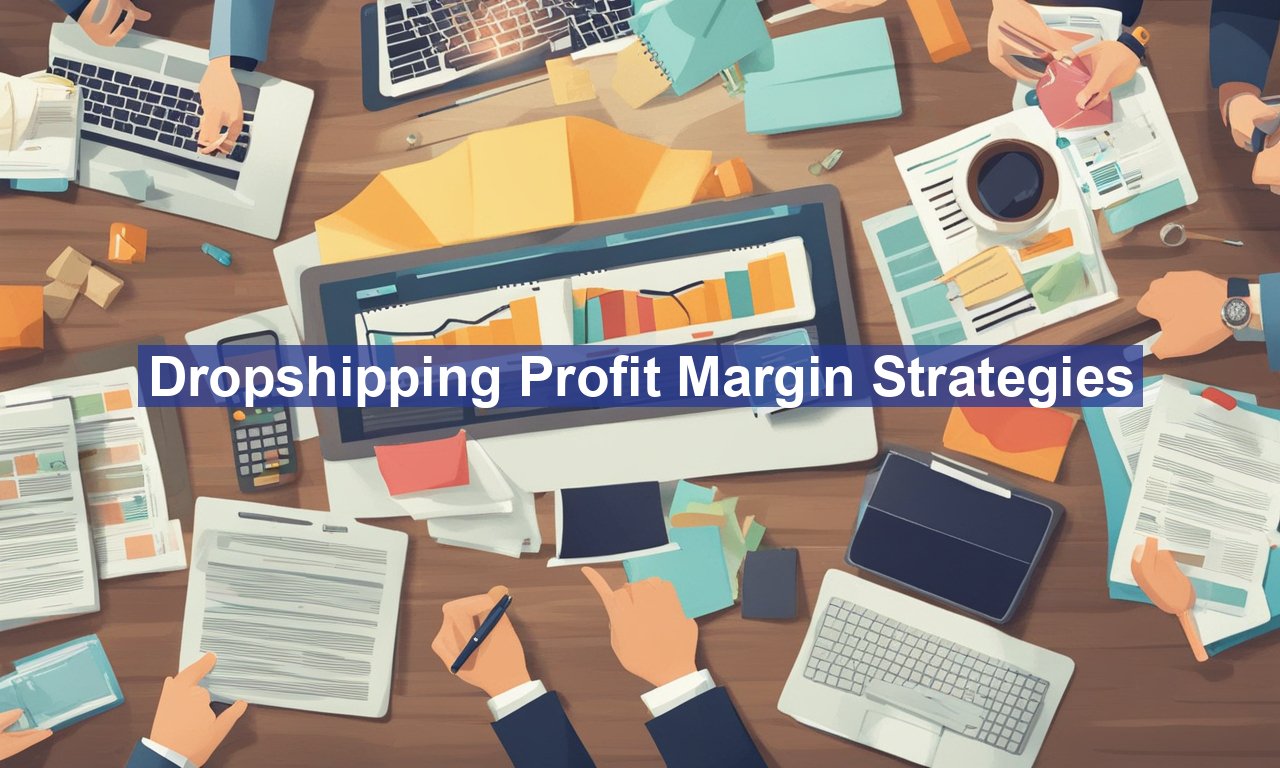Dropshipping profit margin strategies in today’s fast-paced digital world, almost everyone is talking about dropshipping as a viable business model with low startup costs and the promise of easy management. But while the overhead is reduced due to less inventory and storage concerns, many wonder how to maximize profit margins effectively. This article dives into strategic approaches to elevating your dropshipping efforts, ensuring that you’re not just staying afloat but thriving.
By the end, you’ll be equipped with actionable insights to boost your profits in this competitive landscape.
Understanding Dropshipping Profit Margin Strategies
Firstly, let’s clarify what profit margin is. In simple terms, it’s the difference between the cost of the product and what you sell it for, often expressed as a percentage of the selling price. For dropshippers, managing this margin is critical because unlike traditional businesses, they often have less control over the pricing and additional costs like shipping.
The Importance of Supplier Selection
Choosing the right supplier is crucial in managing your profit margins. The wrong supplier can lead to higher costs and unhappy customers. Here’s what to look for:
- Reliable communication: Can you easily communicate with them, and are they responsive?
- Consistent pricing: Make sure they offer stable prices that won’t eat into your profits.
- Quality assurance: Always prioritize suppliers who offer high-quality products.
For those starting out, using reliable platforms like Oberlo or AliDropship can streamline finding dependable suppliers. These platforms also offer additional metrics and tools to assess potential suppliers.
Setting Competitive Pricing
Pricing can make or break your dropshipping business. However, setting the price too high might deter potential customers, whereas pricing too low can erode your profit margins. Here’s how to find the perfect balance:
Conduct Market Research
Keep an eye on your competitors. This doesn’t mean you have to match their prices, but understanding the market landscape helps in setting a competitive rate. Tools like Google Trends and market research reports can give you deeper insights into what customers are willing to pay.
Value-Based Pricing
Rather than strictly basing your prices on competition or cost alone, consider the value you’re providing to your customers. By emphasizing product uniqueness or superior service, you can justify higher prices. This approach not only potentially increases profit margins but also places your brand in a premium position in the customer’s mind.
Cutting Costs Without Sacrificing Quality
While increasing prices can help improve margins, cutting unnecessary expenses is equally vital. Here’s how you can do that effectively:
Negotiate with Suppliers
Once you establish a relationship with a supplier and demonstrate consistent sales, negotiate for better rates. Bulk purchasing can also leverage lower pricing. Make sure to foster a partnership where the supplier sees mutual benefit in your growth.
Opt for Efficient Shipping Solutions
Shipping costs can eat into your profits, so opting for the most economical yet reliable shipping options is key. Some suppliers offer subsidized shipping rates or are willing to include shipping fees within the product pricing, which can greatly affect your overall profit margins.
Automate and Streamline Operations
In dropshipping, time is money. The more you can automate processes, the more time you can spend on revenue-generating activities like marketing or customer service. Consider these tools to enhance your operational efficiency:
- Inventory Management Software: Automated systems help track stock levels so you don’t sell unavailable items.
- Order Fulfillment Systems: Using apps that handle order processing can significantly cut down manual work, reduce errors, and ensure faster dispatch.
Enhance Marketing Strategies
Marketing can drive your sales up and significantly improve profitability. However, it’s crucial to deploy the right strategies to not overspend.
Utilize Social Media Platforms
Platforms like Facebook, Instagram, and TikTok offer vast opportunities for reaching your target audience through cheap yet effective marketing methods. Conducting A/B testing on these platforms can refine your strategies and reduce unnecessary spending.
Leverage SEO
An optimized website that ranks high on search engines can drive organic traffic, reducing the amount spent on paid advertisements in the long run. Familiarize yourself with on-page SEO and use tools like Google’s Keyword Planner to find what your potential customers are searching for online.
For more detailed guidance on SEO strategies, you can check out Google’s own SEO Starter Guide.
Building Customer Loyalty
Retaining existing customers is cheaper than acquiring new ones. Fostering loyalty can significantly impact your profit margins as returning customers tend to buy more and are less price-sensitive.
Implement Loyalty Programs
Loyalty programs or special discounts for returning customers can encourage repeat purchases. For instance, offering exclusive early access to sales or small rewards can greatly enhance customer retention.
Exceptional Customer Service
In a market where competition is fierce, exceptional customer service can set you apart. Quick responses, clear communication, and solving problems effectively before they escalate builds trust and promotes brand loyalty.
In conclusion, by applying these dropshipping profit margin strategies, you’ll be better positioned to keep your business not only profitable but also sustainable in the long term. The key is continuous optimization—always be on the lookout for inefficiencies that can be improved. After all, a lean, agile business is one that thrives in any market condition.


